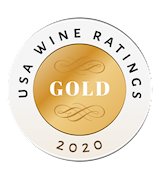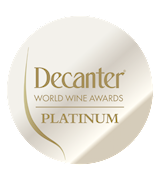Best Dubrovnik-Neretva County Alcoholic Beverage Types
Pošip is a native Croatian grape which was discovered by chance on the island of Korčula. Although it is cultivated in other Dalmatian regions, the grape is still extensively grown on Korčula, and it achieves the best results in the vineyards located around the villages Smokvica and Čara.
The best versions of varietal Pošip will be full-bodied and harmonious with a perfect balance of alcohol and acidity. They are usually golden yellow with fruity aromas of apricots, almonds, Mediterranean herbs, figs, and citrus fruit. Pošip wines are a perfect match to most Dalmatian dishes, especially fish and shellfish, while oak-aged version can pair well with octopus or veal.
Dingač is a Croatian wine-growing region located on the Pelješac Peninsula. The region is a protected and the most famous site for Plavac mali—native Croatian grape that produces highly-prized red wines. Due to its small size, the area is often called a microregion.
It is located on the steep southern slopes of the peninsula, between the villages Trstenik and Podobuče. The combination of specific climate and terrain provides low yields, but the result is an incredibly concentrated wine and what is considered as the supreme expression of Plavac mali.
Grk or Grk bijeli is a native Croatian grape from the island of Korčula that is mostly used in the production of dry white wines. The grape rarely gives high yield, and it is mainly grown on sandy soils that surround the city of Lumbarda.
Since the name Grk translates as Greek, it was long assumed that the grape had origins in Greece, but recent studies contradict this idea and state Crljenak kaštelanski as the only close relative to this rare and unique Croatian grape.
Also, the word grk can be roughly translated as bitter—subtle tartness is a common characteristic found in Grk wines. Most Grk wines are mineral and aromatic, with herbal nuances and a good balance of acidity and sugars. Interestingly, Grk grape has only female functioning parts—meaning that it needs to be planted along with other grape varieties.
Postup is a Croatian wine-growing region designated for the production of ruby red wines from Plavac mali—one of the hallmark Dalmatian varieties. The region is located on the southern slopes of the Pelješac peninsula, and for a very long time, it was unfairly overshadowed by the neighboring Dingač appellation.
Postup is the second oldest protected wine region in Croatia (1967), after Dingač, and nowadays it enjoys the reputation as one of the best expressions of Plavac mali, and one of the best Croatian wines. Postup wines are full-bodied and balanced, with fruity aromas reminiscent of berries, dry plums, and dry figs.
Malvasia from Dubrovnik is not a native Croatian variety. Although the grape has been cultivated in the area for over 600 years, research has shown that it is identical to the Italian Malvasia di Lipari. It is believed that it originated from Greece, and it then spread to several Mediterranean countries, including Croatia, Italy, and Spain.
It is a rare, low-yield grape that was saved from extinction. Only a handful of producers, mainly located around Dubrovnik and Konavle, still cultivate and promote this exceptional grape. The wines have an appealing golden yellow color. They are incredibly aromatic, displaying a combination of stone fruit and floral aromas, often with citrus hints and honeyed nuance.
MAIN INGREDIENTS
Rozulin is a traditional rose liqueur that hails from Dubrovnik. It is made from an old rose variety Rosa centifolia, which was once a common sight in the Dubrovnik area. The liqueur is traditionally prepared in spring. Classic preparation involves layers of sugar and cleaned rose petals doused in neutral alcohol, usually local pomace brandy loza.
The combination is left in the sun until the sugar is melted and the rose essence is thoroughly infused. Nowadays, the liqueur is commonly prepared by macerating rose petals and sugar syrup in neutral alcohol. The petals are removed, and the liqueur is stored in decorative bottles.
Best Dubrovnik-Neretva County Alcoholic Beverage Producers
Best Dubrovnik-Neretva County Alcoholic Beverages
AWARDS

USA Wine Ratings - Gold
2020
AWARDS

USA Wine Ratings - Gold
2020
AWARDS

Decanter World Wine Awards - Platinum
2021
TasteAtlas food rankings are based on the ratings of the TasteAtlas audience, with a series of mechanisms that recognize real users and that ignore bot, nationalist or local patriotic ratings, and give additional value to the ratings of users that the system recognizes as knowledgeable. TasteAtlas Rankings should not be seen as the final global conclusion about food. Their purpose is to promote excellent local foods, instill pride in traditional dishes, and arouse curiosity about dishes you haven’t tried.




